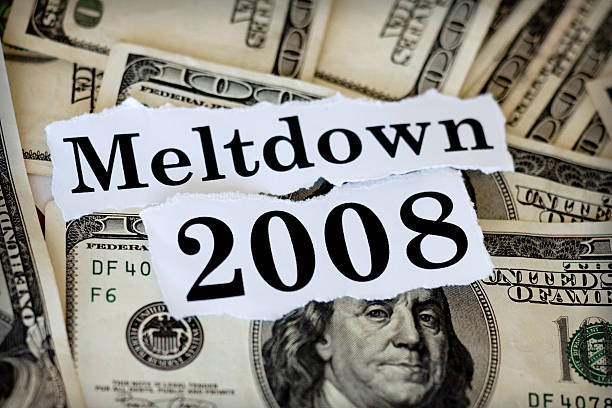The stock market crash of 2008 stands as one of the most significant financial crises in modern history. Triggered by a combination of systemic failures, risky financial practices, and a lack of regulatory oversight, this event had a profound impact on global economies, wiping out trillions of dollars in market value and leading to widespread economic hardship.
Background: What Led to the Crash?
The Housing Bubble
At the heart of the stock market crash of 2008 was the housing market bubble. Throughout the early 2000s, U.S. housing prices surged due to aggressive lending practices, low-interest rates, and the belief that property values would continue to rise indefinitely. Banks and financial institutions began issuing subprime mortgages—loans to individuals with poor credit histories—betting on the assumption that rising home prices would offset the risk of default.
Financial Derivatives and Risky Investments
Financial institutions packaged these subprime mortgages into complex securities, known as mortgage-backed securities (MBS) and collateralized debt obligations (CDOs). These products were sold to investors worldwide, often with top-tier credit ratings that belied their inherent risk. The lack of understanding and transparency surrounding these financial instruments exacerbated systemic risk.
Regulatory Lapses
A critical factor in the stock market crash of 2008 was inadequate regulatory oversight. Agencies like the Securities and Exchange Commission (SEC) failed to monitor the escalating risks in financial markets. Additionally, credit rating agencies underestimated the risk of subprime securities, giving them overly optimistic ratings that misled investors.
The Trigger: Lehman Brothers Collapse
In September 2008, Lehman Brothers, one of the largest investment banks in the U.S., filed for bankruptcy. The firm’s collapse, driven by its heavy exposure to toxic mortgage assets, sent shockwaves through the financial system. This event marked the tipping point of the financial crisis, as it shattered investor confidence and led to a domino effect in the global markets.
Immediate Impact on the Stock Market
Market Meltdown
The stock market crash of 2008 saw major indices plummet. The Dow Jones Industrial Average fell by 777 points on September 29, 2008—the largest single-day point drop in history at the time. Other indices, including the S&P 500 and NASDAQ, experienced similar declines as panic gripped investors.
Widespread Wealth Destruction
The market crash wiped out trillions of dollars in shareholder wealth. Retirement savings, investments, and pensions were decimated, leaving millions of individuals facing financial uncertainty. This wealth destruction had far-reaching implications, stalling economic growth and increasing unemployment.
Broader Economic Consequences
Banking Sector Crisis
The collapse of Lehman Brothers highlighted vulnerabilities in the banking system. Many financial institutions faced liquidity crises as credit markets froze. Major players like Bear Stearns, Merrill Lynch, and AIG required government intervention to stay afloat.
Global Recession
The stock market crash of 2008 was a precursor to the Great Recession, which saw global economies contract sharply. In the U.S., unemployment soared to over 10%, while GDP shrank for consecutive quarters. Internationally, countries dependent on U.S. trade and investment also experienced significant downturns.
Foreclosures and Personal Financial Struggles
Millions of homeowners, unable to meet their mortgage payments, faced foreclosure. This housing market collapse further depressed property values, creating a vicious cycle of economic distress. Personal bankruptcies and debt defaults reached record levels, amplifying the crisis’s impact.
Government Response and Recovery Efforts
Bailouts and Stimulus Packages
In response to the crisis, the U.S. government enacted several measures to stabilize the financial system. The Troubled Asset Relief Program (TARP) allocated $700 billion to purchase toxic assets and inject capital into struggling banks. Additionally, the Federal Reserve slashed interest rates to near zero and implemented quantitative easing to increase liquidity.
Regulatory Reforms
To prevent a recurrence of the stock market crash of 2008, regulatory frameworks were overhauled. The Dodd-Frank Wall Street Reform and Consumer Protection Act introduced stricter oversight of financial institutions, improved consumer protections, and addressed systemic risks in the financial sector.
Long-Term Economic Recovery
While the immediate effects of the crisis were devastating, coordinated efforts by governments and central banks helped stabilize markets. By 2013, the U.S. stock market had largely recovered, with indices reaching pre-crisis levels. However, the recovery was uneven, with many individuals and communities facing prolonged economic hardship.
Lessons from the Stock Market Crash of 2008
- Importance of Transparency: The crisis underscored the need for greater transparency in financial markets and instruments. Investors must fully understand the risks associated with their investments.
- Risk Management: Excessive risk-taking by financial institutions without adequate safeguards can lead to catastrophic consequences. Stringent risk management practices are essential.
- Effective Regulation: The lack of regulatory oversight was a key contributor to the crisis. Robust and proactive regulatory frameworks are crucial to ensure market stability.
- Interconnectedness of Global Economies: The worldwide impact of the stock market crash of 2008 highlighted the interconnectedness of modern economies. A crisis in one region can quickly spread globally.
Conclusion
The stock market crash of 2008 serves as a stark reminder of the potential consequences of unchecked financial speculation, inadequate regulation, and systemic vulnerabilities. While the crisis caused immense suffering, it also prompted significant reforms that have strengthened the global financial system. Understanding the factors that led to this crash is essential to avoiding similar pitfalls in the future. By learning from the past, policymakers, investors, and institutions can work towards creating a more resilient and equitable economic landscape.

